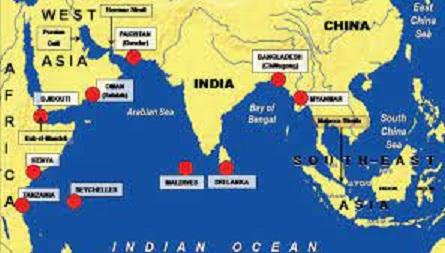Africa-Press – Mauritius. The Indian ocean’s vast expanse of 74m sq kms is host to heavy international maritime traffic that includes half of the world’s container cargo, one third of its bulk cargo and two thirds of its oil shipment.
In particular, its waters carries heavy traffic of petroleum and petroleum products from the oil fields of the Persian Gulf and Indonesia so vital for all churning economies and factories.
The ocean, with its natural choke-points, was without doubt the highway of international trade for essential commodities. There have also been as yet untapped expectations of resources from the ocean’s seabed or its largely unexplored submarine realities.
The Indian Ocean, with its crowded and in some cases contested sea lanes, is becoming the centre of international maritime rivalry, with various powers jousting for influence and advantage in the world’s third largest body of water, which serves as a vital transit route for the global economy. Pic – Stagecraft and Statecraft
Towards the dawn of the 21st century, Western powers and some Far East countries (China, Japan) had increasingly integrated the fact that the Indian Ocean consisted of some of the most critical sea lanes and choke points that connected the oil-rich Middle East, East Asia and Africa on which most oil and goods trade relied and their own development came to depend.
Inevitably, the geodynamics of the region has been shifting rapidly, leaving by the wayside concepts that no longer fitted the evolving ages: Indian Ocean – zone of peace, Demilitarised and denuclearised Indian Ocean, the Chinese “string of pearls” protocol that unsettled India’s new political establishment and even the relatively recent Indian Ocean Rim Association have all faded out as the new imperatives and strategic thinking by major players evolved.
It is no longer simply a matter for navies plying the high seas to demonstrate a friendly and perhaps reassuring presence around the coasts of island and continental countries, with courtesy exchanges and visits.
Neither is it about rival navies from competing European nations taking pot-shots across each other’s bows as in the 18th century or the type of brazen “gunboat diplomacy” that was witnessed in the British Empire’s heydays.
Nor is it about the even more hare-brained attempt of US and British naval squadrons attempting to blockade Indian ports and its fledgling fleet as the country was entangled unwittingly in the liberation of East Bengal from the murderous oppression of West Pakistan with millions of refugees streaming into Indian Bengal.
New realities have by necessity and sometimes by strategic rethink superseded older visions of the Indian Ocean’s strategic importance to economies around much of the globe.
For More News And Analysis About Mauritius Follow Africa-Press







